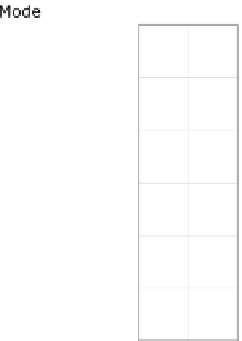Geoscience Reference
In-Depth Information
According to the model, these dissimilarities result from the different nature of the
two sub-monsoon systems. In the Indian monsoon area, most of the annual
precipitation and, hence, of the precipitation change is related to the summer
monsoon. In the East Asian monsoon domain, it rains during summer and spring, so
that the sign of the annual signal is determined by the balance of decreased spring
and increased summer precipitation during mid-Holocene (Fig.
1
). This ratio could
be strongly affected by the local environment (e.g. topography). Our study shows,
that moisture changes in the East Asian monsoon system can not be interpreted as
an indicator for summer monsoon intensity changes.
Vegetation change: According to vegetation modeling and the fossil data set
including 218 harmonized and homogenized pollen records (Cao et al.
2013
), the
Holocene vegetation change in the Asian monsoon region is rather small. Large
changes in land cover only occur in the transition zone of the moist Asian summer
monsoon and the dry westerly winds in East Asia as well as on the Tibetan Plateau.
For the Tibetan Plateau, high resolution pollen records (presented and discussed in
Herzschuh et al.
2010
) are compared to the transient vegetation simulation
(Dallmeyer et al.
2011
). The simulated and reconstructed vegetation trends agree
for most sites and both reveal a strong vegetation degradation and forest decline on
the Tibetan Plateau (Fig.
2
). The simulated forest fraction decreases by nearly one
third from mid-Holocene to pre-industrial, revealing that the land cover on the
Fig. 2 Simulated (Model) land cover trend (fraction of area, 1 = 100 %) and reconstructed (Rec.)
land cover trend (arbitrary units) from mid-Holocene (6,000 years BP) to pre-industrial (0k) for
two of the four analyzed regions on the Tibetan Plateau (for details see: Dallmeyer et al.
2011
).
The biome reconstructions are given in arbitrary units called biome scores and they only give
semi-quantitative information on dominant and sub-dominant biomes. Left panel: North-Eastern
Tibetan Plateau compared to Lake Qinghai (36.55
N, 100.1
E). Right panel: Central-Western
°
°
Tibetan Plateau compared to Lake Bangong (33.42
N, 79
E)
°
°












































































































Search WWH ::

Custom Search